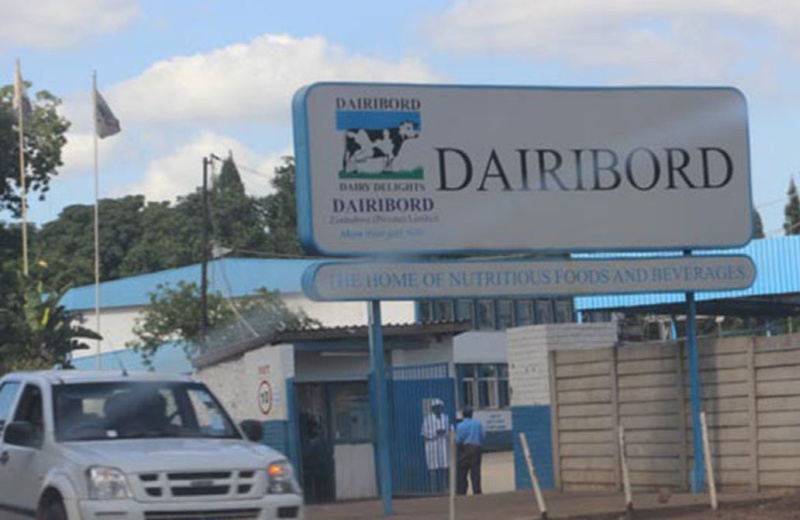ZiG use needs to eliminate choke points
Despite muttering and attempts by surviving and secretive black market dealers to sell US dollars for higher prices in ZiG, the new currency is holding its own as export earnings continue rising and the Reserve Bank of Zimbabwe signalled last month that it would intervene in the interbank market.
That signal on July 25 was a statement by Reserve Bank Governor Dr John Mushayavanhu that the Reserve Bank would inject more than US$50 million into the interbank foreign exchange market to meet the demand by legitimate buyers of foreign currency, presumably from reserves.
The same statement noted that the gold and foreign currency reserves for the ZiG were now more than four times the quantity of ZiGs in circulation, up from a little over the three-fold cover when the ZiG was launched on April 5.
Central banks do intervene in foreign currency markets, at least outside the United States which has the advantage that its national currency is also the principal global reserve currency and used, at least for price quoting, for much of internal trade although other heavyweight currencies will increasingly be used to make the payments.
The Reserve Bank of Zimbabwe is now intervening correctly having dumped the auction systems and injecting money into the market via the banking system, basically by buying ZiG from the banks. It could also do the interventions in the opposite direction, by buying US dollars once there were too many of those in the market and not enough ZiG.
That might sound weird to Zimbabweans, but if we had all internal dealings in ZiG it could well be necessary as there is a positive balance of payments, that is more foreign currency flows into the country than flows out. The complication is the multi-currency system and the fact that non-trade inflows, mainly the diaspora remittances and aid inflows mainly to NGOs, fill the gap for the modest and declining negative balance of trade.
Diaspora remittances hit US$1,873 billion last year and are still rising, with inflows from international organisations being at US$1,136 billion, the same as 2022. These two inflows made up the vast bulk of the US$3,297 billion in non-trade inflows last year. The remainder was other personal inflows which are not detailed but which would be money brought into the country by Zimbabweans with foreign bank accounts or foreign sources of income, everything from foreign pension payments to money banked outside when the Zimbabwean making the personal transfer was working outside the country.
The point is that these non-trade inflows are all regarded as free funds and do not have to be converted on arrival into ZiG and few convert, preferring to spend this foreign cash as foreign currency in the domestic market.
Exporters and other earners, rather than just receivers of foreign currency, do have to sell off 25 percent of that earned foreign currency on receipt, the Government these days being the buyer. At present the earner can keep the remaining 75 percent stuffed in a foreign currency account and just spend it as foreign currency in the multi-currency system now in place.
Efforts to get more free funds and retained earned funds converted to ZiG have centred on the Government requirement for a growing percentage of corporate taxes to be paid in ZiG, at least 50 percent even if all profits being taxes are in foreign currency.
In practice US dollars circulate as a domestic currency, although the sources are the personal transfers and international organisations payments making up the free funds and the retained export earnings. But that money can pass through several hands before it eventually goes on a foreign payment, usually for imports.
The interbank foreign currency market relies on matching up sales from FCAs to approved buyers of foreign currency, and since at the very least diaspora money does not go through an FCA, or at least very little does, the negative trade balance does create what Dr Mushayavanhu called the pipeline delays and so require active Reserve Bank intervention.
A dedollarised Zimbabwe, that is one where all local payments and transactions had to be in local currency, would thus with a strong positive balance of payments create the US dollar surpluses in the banking system that would require Reserve Bank intervention in the other direction.
That intervention, incidentally, is what would provide the funding for the servicing of external debt, a Government responsibility rather than a Reserve Bank function, but the Reserve Bank would collect the cash through not allowing the local currency to rise dramatically in value and price Zimbabwe out of export markets.
The briefings after this week’s Cabinet meeting stressed the continuing policy of the Government to dedollarise the economy, that is move domestic market to a single local currency. The strongly positive balance of payments allow that as a fundamental, with the level of external debt then set to ensure that there was enough surplus foreign currency after trade and legitimate personal requirements to service that debt.
While Eddie Cross and other economists have pressed for a big bang, that we all wake up one morning to find all prices and all domestic transactions in local currency and all personal, organisational and trade inflows converted on arrival, the Government is bound to maintain the multi-currency system for a while, until 2030.
The problem is moving from where we are now, when far too many people want to be paid in US dollars and with the bulk of personal savings being stacks of cash under the mattress doing zero good, to the normal situation. This has to be done gradually in stages.
The economy last year was chugging along with around 70 percent of domestic transactions in US dollars. During the last major assault on the local currency early this year when it was still the Zimbabwe dollar, that rose to over 80 percent and was even climbing towards 90 percent. The ZiG, better managed and backed by reserves, reversed the trend and the Cabinet briefing said foreign currency had fallen back to 70 percent.
One major advance would be to switch petroleum fuels to local currency, but without the queuing that caused the conversion to foreign currency in the first place. Petroleum fuels are the largest single import. So funding these out of free funds, basically the diaspora segment, and the retained export earnings moved them from the trade account to the general foreign currency account.
Moving them back would mean that more FCA money would have to be converted and diaspora recipients would have to convert to buy petrol. This is possible, but the complication is that diaspora recipients, and those who are in the payment chain initiated by diaspora recipients, would in far too many cases turn to the black market to sell.
There has been a determined assault on the black market, both on the street dealers who now form a large group in the remand prisons, and on the organisers of the market, who have been hard hit by civil penalties, the “fines” the Reserve Bank talks about, since proof beyond reasonable doubt is difficult for a criminal conviction but the civil standard of balance of probability is far easier.
Again the Cabinet has approved intensifying the assault on illegal dealings, some of the extra methods being obvious such as tying point-of-sale machines to the business account of the holder of the machine which makes it far harder to be missed by the Financial Intelligence Unit.
This pressure on the black market needs to be maintained, but at the same time those forced to use it to buy fuel, and even pay rent, need to be given a ZiG option. Gradualness will be tricky here, since even those who pay for almost everything in foreign currency they receive or earn will queue up with those who only have ZiG to buy ZiG fuel. But it could be done, perhaps with personal limits imposed for each purchase, although a ration card would be more effective but difficult administratively and politically to implement, even when dollar fuel was still readily available as a safety valve.
Then there are the tuckshops and the vendors, fairly solid supporters of a dollarised economy, and this would include their suppliers among the importers, manufacturers and even the horticulture farmers. But considering the economic growth benefits of the switch, some imagination and innovation is needed to work out effective ways to bring the ZiG into these petroleum and informal sectors.
The gradual approach has these gates that will block progress unless ways can be found to open them. But once some open gates exist the gradual approach will start working in widening the gateways, rather than creating them.-ebsinessweek












